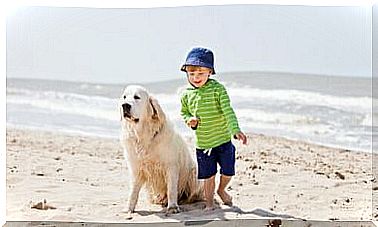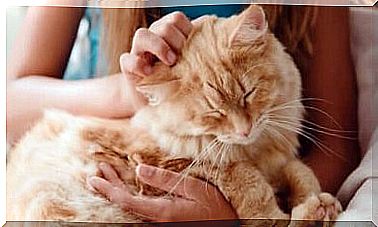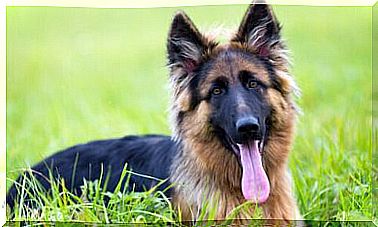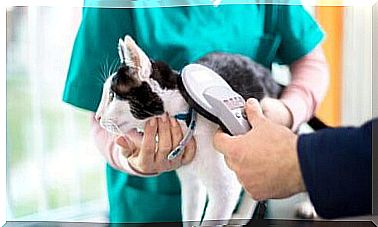Wobbler Syndrome In Dogs: Causes, Symptoms And Treatment
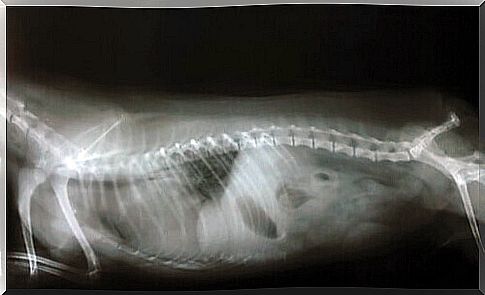
Wobbler’s syndrome or caudal cervical spondylomyelopathy (SCC) is a disease that affects the cervical spine of large dogs. The early diagnosis is essential to avoid serious complications, such as disability or neurological deficit. In this article we will talk about this spinal compression in dogs, presenting you with possible causes, symptoms and treatments .
Wobbler syndrome: characteristics and symptoms
Wobbler’s syndrome includes several chronic degenerative disorders that usually cause motor problems and neurological damage. It happens when the spinal cord and nerves in the neck are subjected to excessive compression ( myelopathy ).
The disease becomes visible only when the patient begins to complain of constant pain in the neck. A non-specific symptom that in dogs is also very difficult to recognize at the beginning.
Therefore, most of the diagnosis is generally made after the pop-up of more advanced neurological signs. It usually happens when the dog starts to stagger and loses his balance easily. The main symptoms of Wobbler’s syndrome are:
- Unstable and shaky walk, found even with a few steps.
- Pain or stiff neck.
- Loss of muscle mass on the shoulders and forelimbs.
- Fatigue and weakness.
- Partial or complete paralysis.
- Swelling of the front and back legs.
- Difficulty getting up and moving.
Wobbler syndrome: causes and genetic inheritance
This myelopathy is known to result from the narrowing of the bone canal that surrounds the soft spinal cord (vertebral canal). This reduction is usually caused by a bone malformation or by a slipping of the intervertebral disc.
The specific etiology of Wobbler’s syndrome is unknown. But knowing its causes, together with the compatibility of possible diagnoses, allows us to assume that the key lies in genetic inheritance.
Almost 50% of diagnosed cases affect dogs of the Doberman, English Mastiff and Great Dane (Great Dane) breeds. A greater predisposition is also observed in other breeds, such as: Irish Greyhound, Giant Dachshund and Rottweiler.
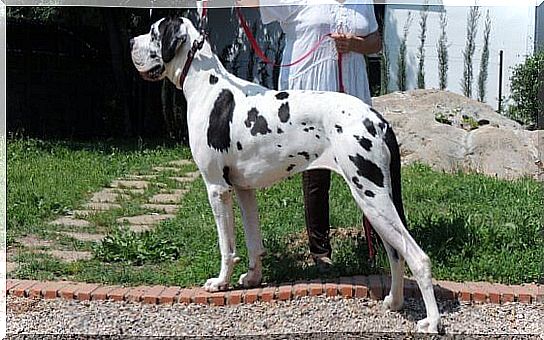
Another determining factor is the size of the animal. It is assumed that the rapid growth of large dogs makes them more susceptible to degenerative diseases.
Nearly 70% of Wobbler syndrome diagnoses occur in large or giant dogs. Some rare cases have occurred in small or miniature dogs (Yorkshire, Pinscher, and Chihuahua).
Diagnosis of Wobbler’s Syndrome in Dogs
The differential diagnosis for Wobbler’s syndrome is obtained by looking at the spinal column and the respective vertebrae. To do this, the vet will require an X-ray test , computed tomography, MRI, and myelogram to be performed.
Normally, the doctor will also request blood and urine tests to rule out other more common conditions. It will also take into account an analysis of the overall health picture of the animal, as well as its genetic profile.
How to cure Wobbler syndrome in dogs
Treatment consists of surgery to relieve pressure in the spinal cord and decompress it. But the outcome of the operation will depend on the physical shape of the animal and the position of compression in the marrow.
When the animal is very weak or at an advanced age, the vet may choose not to perform the surgery. The probability of death or irreversible neurological damage is so high that it does not justify exposing the animal to such a risk.
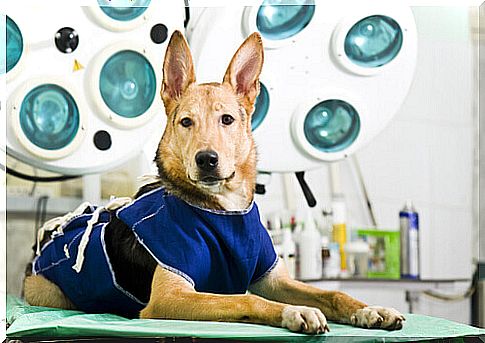
In these cases, treatment is usually outpatient to reduce pain and improve the quality of life of the dog with Wobbler’s syndrome.
Post-operative recovery
To ensure adequate recovery, the dog must complete a rest period of 2-3 months. It is essential to prevent the animal from jumping or running in order not to damage the solidification of the bones.
Since the dog cannot walk, it is important to lay him on soft and comfortable surfaces. Logically, the animal will be kept under observation to avoid the formation of ulcers and wounds.
The physiotherapy will be essential to accelerate the recovery and strengthen the dog’s body. In addition, it prevents loss of muscle mass and atrophy due to lack of movement.
Wobbler syndrome: is it possible to prevent it?
As it is associated with genetic factors, it is not possible to speak of a true prevention for Wobbler’s syndrome. However, we suggest that you strengthen your best friend’s body and immune system so that they grow and develop in a healthier way.
Therefore, it is essential to provide a balanced diet and regular physical activity for the dog. In addition to compliance with preventive medicine and going to the vet with some frequency.
